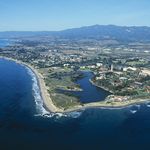 Adobe Community
Adobe Community
- Home
- Lightroom Classic
- Discussions
- Can someone explain this peculiarity of Print Reso...
- Can someone explain this peculiarity of Print Reso...
Copy link to clipboard
Copied
In the Print Module, when all boxes are checked in the Guides panel, the resolution is shown together with image dimensions in a little box in the upper left corner of the print cell.
Following the advice in Jeff Schewe's book "The Digital Print" (and posts he has made on Luminous Landscape) we should override this value with a value that is more printer-friendly, e.g., 360 or 720 for Epson printers. Continuing with the Epson example, if the value displayed is less than 360, Jeff suggests using 360, and if it is greater than 360, he suggests using 720.
To override the value, you check Print Resolution in the Print Job panel and enter the desired resolution immediately to the right.
The peculiarity that I refer to in the title of this post is the following: As soon as you check Print Resolution, the old resolution disappears from the little box in the print cell, leaving only the print dimensions. What is the rationale for this disappearance? What is Lightroom trying to tell us? Why is the old value not replaced by the value that was entered in the Print Job panel?
 1 Correct answer
1 Correct answer
IMO the better (and more comprehensible) metric to show here, in this circumstance, would be the resampling FACTOR.
Your original pixels when cropped a certain amount and placed at a certain scaling on the page, lead to an effective native PPI (pixels per inch) for that image in that circumstance. That's useful to display while you are still working out what the images are capable of; how far they will "stretch" (which is an art as well as a science). This needs to, and does, change whenever you
...Copy link to clipboard
Copied
I think it is because you are inputting that into the resolution box so you know what it is. that info box/cell in the upper left displays it so you can see what it is.
Copy link to clipboard
Copied
Yes, that's a possible reason, but it doesn't seem like a particularly good one. My experience with Lightroom suggests that things are done for good, solid reasons.
Here's an example illustrating the problem caused by this behavior. In order to enter a printer-friendly resolution in the Print Job panel, you check Print Resolution. Then you look to your left to see the printer-unfriendly resolution in the cell, which you need to select the appropriate printer-friendly resolution. But it has disappeared. So you need to toggle Print Resolution off to see it again. That's awkward and error-prone. It would be particularly confusing to new users.
The value displayed in the cell is read-only, so what's the harm in simply displaying the value you enter in the Print Job?
Copy link to clipboard
Copied
I think JSM is right. It is showing the resolution that is used when printing. So, if you enter your own value the calculated from the image is hidden. It may be a good idea to still show the calculated, and the used in addition. Something like: 816 or with own value 816 > 360 .. or whatever
You may want to post this idea here: Photoshop Lightroom | Photoshop Family Customer Community
Copy link to clipboard
Copied
IMO the better (and more comprehensible) metric to show here, in this circumstance, would be the resampling FACTOR.
Your original pixels when cropped a certain amount and placed at a certain scaling on the page, lead to an effective native PPI (pixels per inch) for that image in that circumstance. That's useful to display while you are still working out what the images are capable of; how far they will "stretch" (which is an art as well as a science). This needs to, and does, change whenever you change the size of that image.
Displaying on an image that it is going to be resampled to print to 360dpi, say, does not help you in sizing a given image - if this resampling is going to get applied to the whole page anyway, regardless of the sizing of that image. It also doesn't help you decide which is the most appropriate "page" DPI to set.
But displaying how an individual image's current "effective native PPI" relates to the current "imposed page DPI", helps you in making both of those decisions: perhaps displayed as a percentage, or as a ratio.
Experience tells us empirically (for each physical printing method, perhaps different for matt and gloss paper say) what degree of upsizing for printing, is found to work acceptably in practice. Maybe we can go to 150% size factor, but get diminishing returns above 200%, or whatever.
So IMO that's what it might be useful to see against each image, after we've checked this "resolution" box and entered a figure.
Copy link to clipboard
Copied
Thanks @richardplandon. You gave me the good, solid explanation I was looking for!
Copy link to clipboard
Copied
As I understand printing in LR, you set the 'printer-friendly' resolution, usually 360 (the default value for Epson printers), in the Print Job panel - printer resolution. The value shown in the image with the dimensions is simply the pixels available at the size you have chosen to print. If this is very low it gives you the chance to reduce the size of the print. Then LR resamples the image from the size shown in the image to the 'printer-friendly' value you have set in the Print Job panel, and then sends that to the printer.
AFAIK you cannot change the resolution value shown in the image, other than by changing the print size. I find the resampling in LR is good enough to allow me to print with values as low as 180 or thereabouts, although I prefer values above 240. But you don't resize just to get a value of 360 shown in the image, unless you are not bothered about the size of your prints.
It's much simpler than PS printing!
Bob Frost

